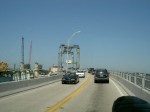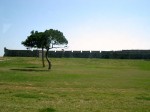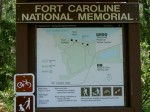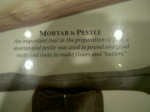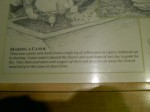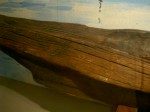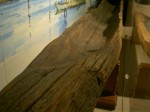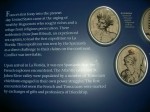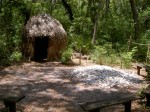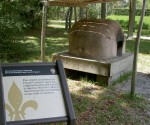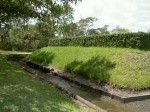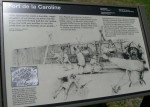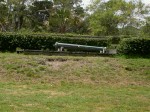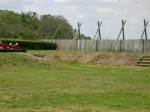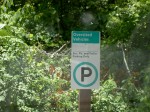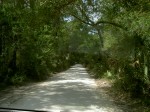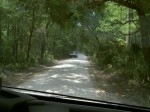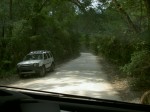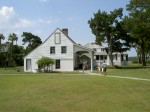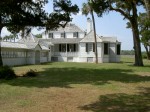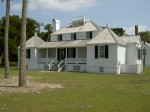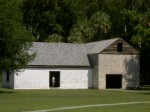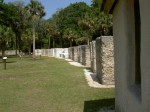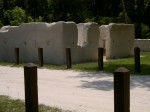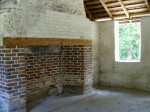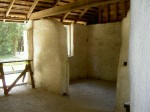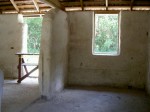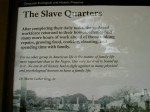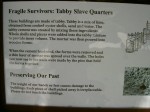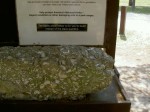We waited for a lift bridge. It went way up for a small sailboat with a tall mast but came back down before the excursion boat passed under it.
We tried to go to the Castillo de San Marco in Saint Augustine, Florida. Their parking lot is limited to vehicles under 21 feet long. We are 24 feet not counting the Segway on the back. So we followed the signs to the over-sized vehicle parking but all we found was a parking ramp too short for us to get into. Oh, well. At least they were open. And I got a picture as we drove by.
We saw a boat so big it had a baby boat on the back of it which Dave called a “toad”. That’s what RVers call the cars they pull behind their big rigs. Sometimes they call it a “dinghy” since that’s what boaters call their rowboats they use to get to and from ships they anchor out a ways because they draft too much water to get into port. Technically the baby boat I saw was a dinghy but since it was the type motorboat often seen cruising on lakes and rivers in Minnesota it’s hard for me to think of it as a dinghy. It was a baby boat only in relationship to the one hauling it.
We then went to Fort Caroline National Memorial. According to their timeline we’ve all taken turns wiping out one another. The Timucuan Indian’s helped the French build Fort Caroline only to see it destroy their way of life. The Spanish attacked the French, who were Protestants, and Catholicism became the ruling religion. The Spanish then planted citrus trees. The British fought the Spanish then spent 20 years clearing the land. Spain regained control at the settlement of the Revolutionary War. During the Civil War the fort protected the plantations. Then the railroad brought the tourists. And here we are today being tourists reading about all of them. But are we learning anything?

